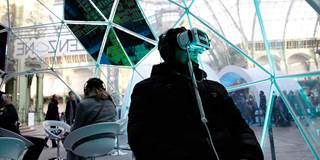The Fourth Industrial Revolution will disrupt employment, just as the previous three did. But before we assume the worst, we should recall that technological change has more often affected the nature of work, rather than the opportunity to participate in work itself.
LONDON – Disruptive technologies are now dictating our future, as new innovations increasingly blur the lines between physical, digital, and biological realms. Robots are already in our operating rooms and fast-food restaurants; we can now use 3D imaging and stem-cell extraction to grow human bones from a patient’s own cells; and 3D printing is creating a circular economy in which we can use and then reuse raw materials.

LONDON – Disruptive technologies are now dictating our future, as new innovations increasingly blur the lines between physical, digital, and biological realms. Robots are already in our operating rooms and fast-food restaurants; we can now use 3D imaging and stem-cell extraction to grow human bones from a patient’s own cells; and 3D printing is creating a circular economy in which we can use and then reuse raw materials.